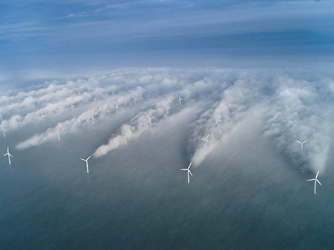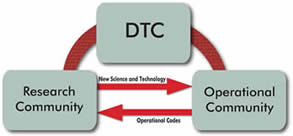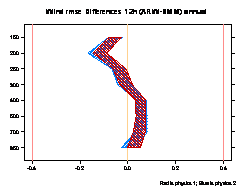 |
 |
| Weatherhead Home | Activities | Projects | Publications | Contact |
| RESEARCH GROUPS @ CIRES > |
Activities and Collaborations
American Meteorological SocietyBoard on Enterprise CommunicationBetsy Weatherhead, "Our goal is the best possible weather forecasts to the end users." Bill Gail, Future AMS President, "We've moved from adversaries to colleages, and now with these meetings, finally to partners." Ray Ban, " action leads to understanding more often than understanding leads to action." Barry Myers, "We must remember how we got here and that as we go fotward, we do so in within a world that is also changing." Don Berchoff, "We want to mine and fuse the data to turn it into knowledge."
|
AMS: Weather Enterprise CoordinationNovember 29, 2012 Powerpoint Presentations: Network of Networks, George Frederick Leave the Computing to Us, Justin Sharp Weather Commission, Tom Bogdan Operational Models, Bill Lapenta Earth Systems Prediction Capabilities, Jessie Carman
___________________________________________________________________
AMS: NOAA/OAR - Private Sector MeetingSeptember 6, 2012 Meeting SummaryTom Fahey - Airline Input to Sep 6 Powerpoint presentations:. FIM & High Resolution Rapid Refresh model – Stan Benjamin. NIM Global Model – Jin Lee. GPU Computing – Tom Henderson
|
Renewable EnergyRenewable energy development is important for the environment by reducing greenhouse gas emissions. The success of renewable energy depends strongly on environmental sciences for forecasting and resource assessment. Betsy Weatherhead is currently working with NOAA, DOE, NASA and NSF to define roles for government, academia and private industry to play in renewable energy. Her background in solar radiation, wind forecast verification and atmospheric science allow her to engage colleagues across disciplines to improve renewable energy usage. Key issues including: improved forecasts, intelligent siting, and new measurements are issues of common interest to the success of renewables, particularly wind and solar power. Dr. Weatherhead's presentation at AMS 2010 on the role of atmospheric sciences in renewable energy. Summary of AMS Summer Meeting 2010 written by Betsy Weatherhead and Ken Reeves |
 |
Analysis of Solar Radiation DataSolar radiation is measured in a small number of locations around the world. Interpreting these data, estimating solar radiation levels from satellite and ancillary information as well as forecasting solar radiation levels are all extremely important activities to understand how the Earth is responding to changes in the atmosphere. Betsy Weatherhead did her PhD on the effects of urban pollution on the transmission of solar radiation through the atmosphere. She is on the United Nation's World Meteorological Organization's Scientific Advisory Group on solar UV radiation, and maintains a web site for the benefit of this community. Some of her most prominent contributions are listed below: All of these documents have been peer reviewed through an EPA process. |
 |
Analysis of Solar Renewable EnergyUnderstanding solar renewable energy requires a comprehensive understanding of solar radiation measurements, radiative transfer, weather forecasting, and air quality forecasting. The limited measurements that exist and the requirement to understand radiation at different angles, requires state of the art radiative transfer calculations to properly estimate radiation as it reaches tilted photo-voltaic receptors. For concentrated solar systems, understanding the direct beam radiation levels becomes challenging because very small dust particles, or thin cirrus clouds can intensively change radiation levels available for concentrated renewable energy. Valuable resources that assist in this work include: Sandia National Laboratories Report on Spectral and Angular response of Photovoltaic Modules Reich report on spectral sensitivities of a few different solar sensors. Nann and Emery report on spectral response of seven different photovoltaic devices 1985 paper by Osterwald showing large variation in spectral response of different detectors. Comparison of spectral variations on both single- and mutli-junction solar cells. Effective spectral irradiance from a variety of PV systems from H.-D. Mohring.
|
 |
AMS / UCAR Congressional Visits September 12, 2012 |
Relevant Supporting MaterialsThe Weather Enterprise is Critical Infrastructure fore the Economy (Cloud one pager) Jeff Lazo peer reviewed paper justifying $ 485 B statement Invitation to September 27 Hill event
|
Developmental Testbed Center (DTC)The Developmental Testbed Center plays a key role in objectively identifying improvements in forecast models. Betsy Weatherhead has played a key role in identifying statistical tests to determine whether a particular forecast model shows a significant improvement over other available models. The techniques included time series analysis of pairwise differences for wind, temperature and humidity. The estimates for pair-wise mean differences between the RMSE values of forecasts with and without additional data are computed for each level in the atmosphere, using both 00Z and 12Z forecasts. Each estimate has an associated uncertainty due, in part, to the small number of days we examined. The estimate on the uncertainty on the mean is estimated as: Standard Error on mean RMSE difference = Where n is the number of RMSE forecast values, x is the set of RMSE forecast values, and Is the lag one autocorrelation derived from the time series x. This is empirically derived from the RMSE values with the approximation:
|
 |
Wind ForecastingAs different forecasting models attempt to improve on wind forecasting, it can be difficult to identify which model is better. Betsy Weatherhead worked with the Developmental Testbed Center (DTC) to compare the NMM and ARW models on their wind forecasting abilities. Metrics were developed to help identify small, but significant differences in models. The results were presented to the DTC and have been used in clarifying the magnitude of improvement changes in the fundamental core of the forecasting models. Differences in both bias and root mean square errors were identified by height and by season.
Improvements in weather forecasting over the years has been a combination of improved models and improved computer capabilities. At each stage of improvement, the measurable performance in forecasting accuracy has been difficult to observe. Using advanced statistical techniques, and well designed tests, these small differences can be identified early in the development process. A full report on the techniques Betsy developed and the ARW-NMM results is available here. |
 |
Unmanned Aircraft SystemsUnmanned aircraft can offer unprecedented abilities for environmental scientists to make critical measurements where manned aircraft are either not feasible or not safe. Betsy Weatherhead has been assisting in NOAA's Unmanned Aircraft Program since 2001, helping define scientific goals and enable safe, effective flights to address critical environmental data gaps. Fifth Annual Arctic Unmanned Aircraft Systems Roundtable: December 17, 2009 Sponsored by: Arctic Research Consortium of the US | Co-chaired by Betsy Weatherhead and Susan Schoenung. Together with Brian Argrow, Betsy Weatherhead co-chaired the first Civilian Applications of Unmanned Aircraft Systems meeting in 2007 in Boulder, CO. The summary of that meeting highlights the value of unmanned aircraft to the civililan priorities of climate change, disaster response and homeland security. Weatherhead's Group has been leaders in coordinating environmental monitoring with unmanned aircraft in the Arctic region. The technology is ideally suited for the little understood area. International cooperation has been strong to allow for safe flights in the Arctic. Two formal meetings were convened by the Arctic Council's Arctic Monitoring Assessment Program (AMAP0. The first, in Stockholm Sweden, outlined the scientific goals for using unmanned aircraft. The second, held in Oslo, Norway, outlined steps necessary to obtain needed airspace and promote coordination. |
|
Ozone RecoveryThe Montreal Protocol and its amendments has resulted in a reduction of ozone depleting substances in the atmosphere. A key question is whether ozone has responded accordingly. Betsy has been involved in a number of papers to examine recent ozone data and determine whether the changes are attributable to changes in ozone depleting substances. Fundamentally, she determined whether the changes in ozone were appropriate in magnitude and location to present a compelling case for attribution. Her latest paper on the subject was featured on the cover of Nature. |
 |
Ultraviolet RadiationUltraviolet radiation is important for all life, with both positive and negative impacts. Too much ultraviolet radiation can cause skin cancer, immune suppression and eye damage in humans. Betsy Weatherhead has been a leader in determining the many factors that affect ozone and how it may be changing with our changing atmosphere. Her work has been funded by USEPA, USDA, NOAA, NASA and DOE. She serves on the World Meteorological Organization's Scientific Advisory Group and has given senate testimony on how UV has changed in the Arctic.
A summary of her analysis of UV radiation can be obtained by clicking here.
|
 |
Ice Seal Analysis - results from unmanned aircraft flightsThe changing ice conditions in the Arctic likely are affecting the ecoysystems that are depending on that ice for survival. Understanding the effects of changes in both the amount of Arctic sea ice and the type of Arctic sea ice requires surveys from vast areas across the Arctic. In the spring on 2009, unmanned aircraft flights took place off of the NOAA vessel MacArthur II, collecting over 27,000 images of ice and, occasionally, ice seals. The following three video clips show what the flights look like as the vehicle is launched, recovered, and what the perspective of the vehicle is on recovery. Final Report from the missionVideos of the mission:See the unmanned aircraft being launched from on-board the ship: Unmanned Aircraft Launch. Recovery of the unmanned aircraft back onto the ship takes place with the vehicle using differential GPS (Global Positioning Sensor) and latching onto a vertical wire: Unmanned Aircraft Recovery. This method of recovery proves to be less jarring for the for the vehicle and its instrumentation than many other landing methods. What does the unmanned vehicle see as it's coming in for a landing? Click here to see the recovery from the vehicle's perspective.: Unmanned Aircraft Perspective of Recovery. Images from the mission:Unmanned aircraft ready for launch Unmanned aircraft immediately after launch Unmanned aircraft coming in for recovery. The vehicle used was a Scan Eagle operated by U. Alaska, Fairbanks. Tha analysis of the images is taking place with a joint venture of Boulder Labs, Inc., NOAA's National Marine Mammal Laboratory and U. Colorado. The analysis effort is funded by NOAA's Arctic Office and is led by Dr. Weatherhead. |
 |
Assessments, Overviews, and International Involvement
|
Collaborations
|


